Stocks rallied at the open as the VIX 1-day dropped sharply, but the gains faded quickly, and it wasn’t long before the S&P 500 turned lower. After closing around 18 on Friday, the VIX 1-day opened Monday near 11, helping to drive the initial move higher for the index.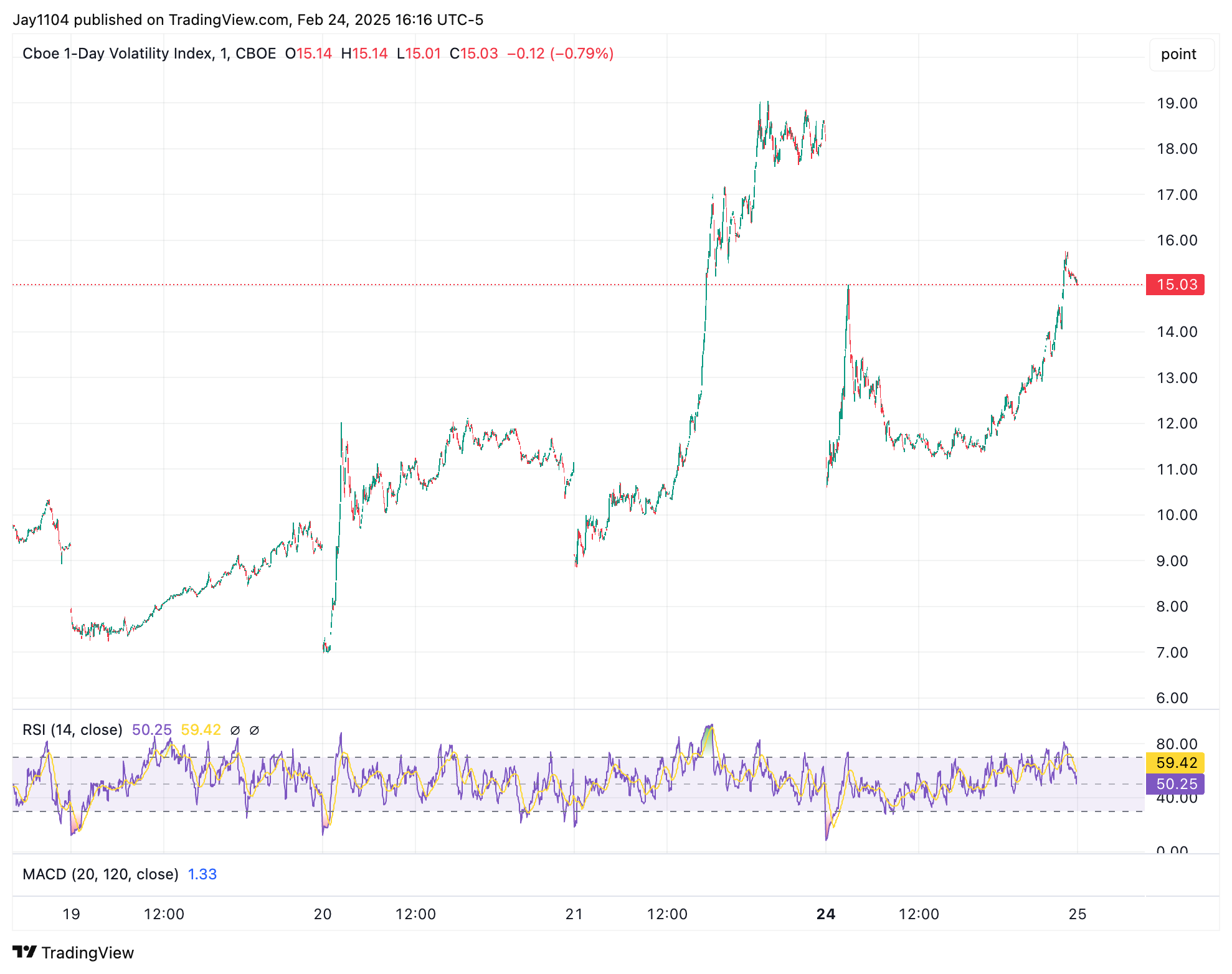
It wouldn’t be surprising to see a move higher at the open today, especially after today’s end-of-day sell-off, which pushed the S&P 500 down 50bps and sent the VIX 1-day back to 15.
The SPX has now broken its uptrend and fallen back below the downtrend it had previously broken on February 13. That’s pretty bearish, but until the index breaks 5,900, there’s not much to discuss. There’s also a gap at 5,840 waiting to be filled, and I still think it happens—because why not? Most gaps get filled over time.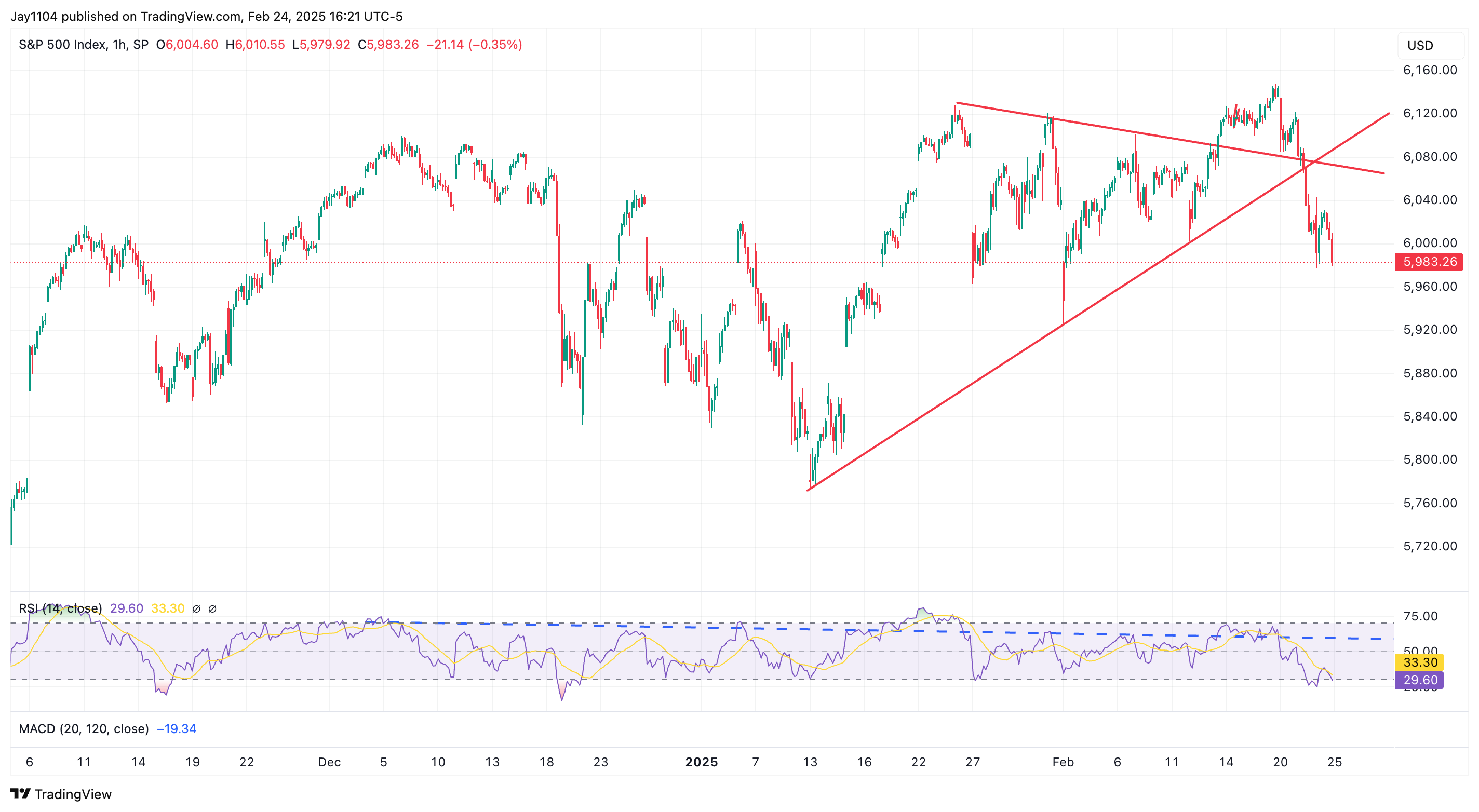
It is pretty the same setup for the NASADQ 100 at this point.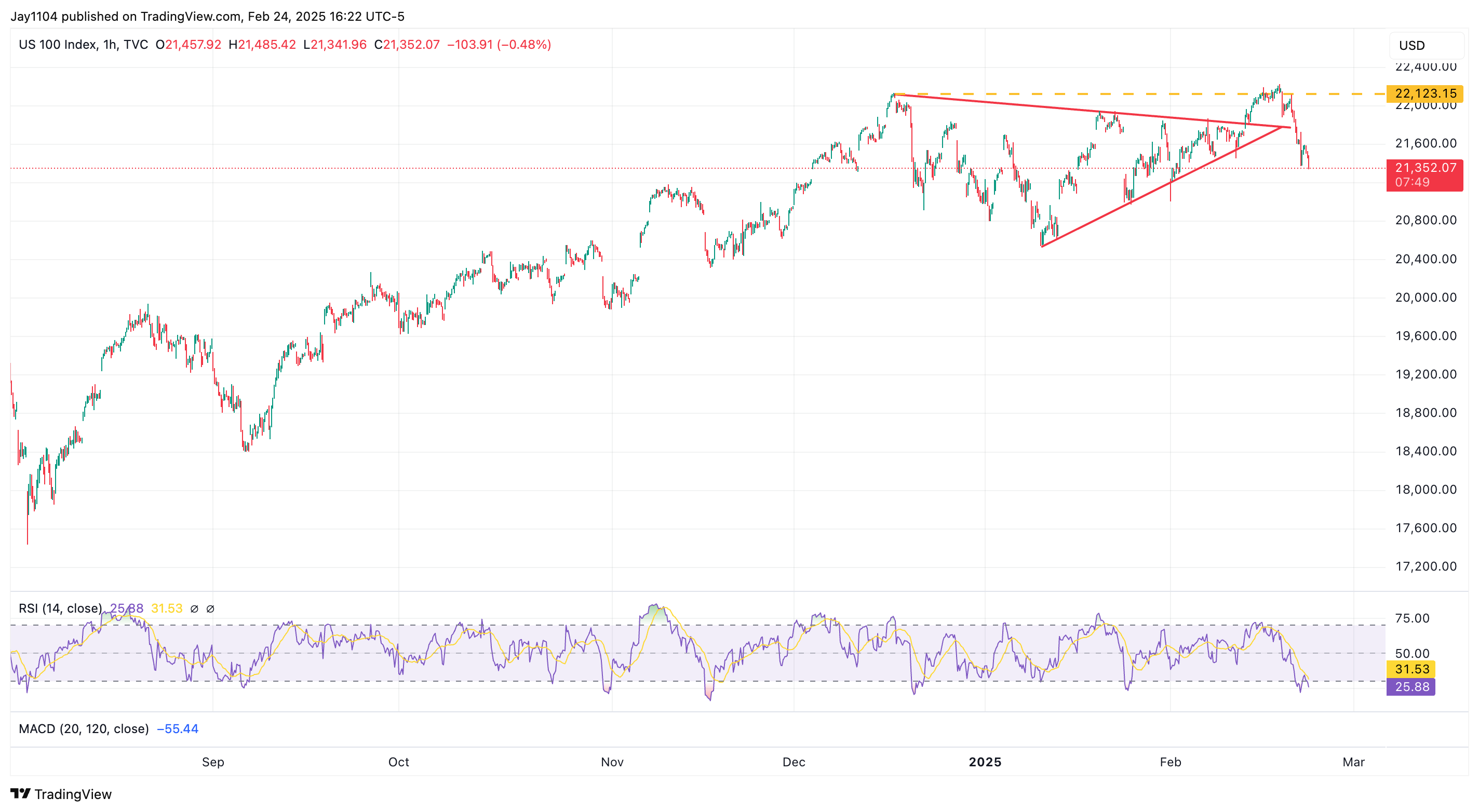
Call it what you want, but Bitcoin is once again returning to the 91,000–93,000 zone, an area that has held multiple times. I don’t think it survives this time—I expect it to break lower and drop below 91,000 on its way back to 67,000. If the symmetry continues to play out, the drop will likely mirror the rally to 91,000.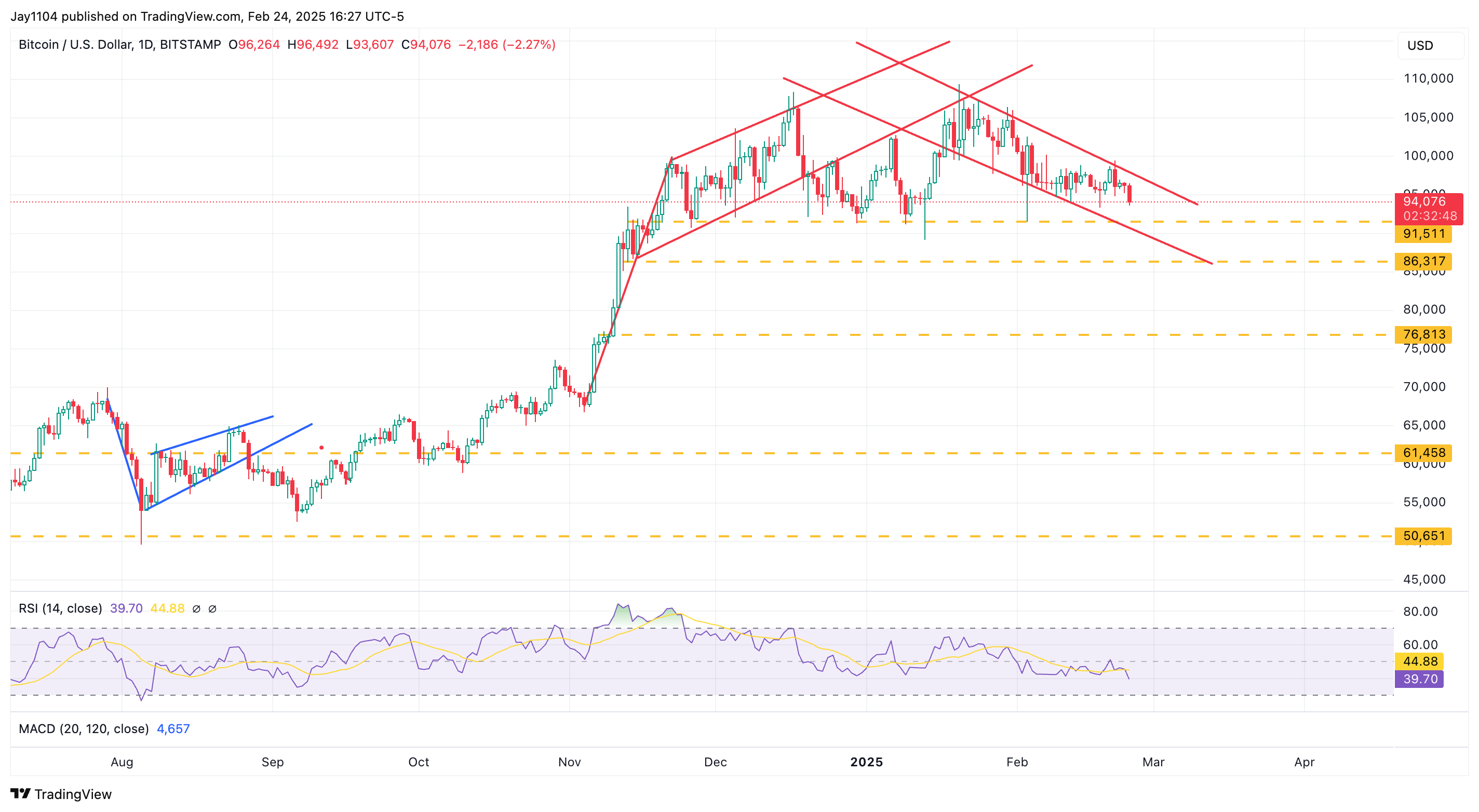
I’m starting to think the decline in the DXY is nearly over. I’m seeing several currency pairs struggling to break through resistance, which suggests the dollar is likely to strengthen. Plus, there’s a nice falling wedge in the RSI that indicates a potential turn for the DXY may be on the way.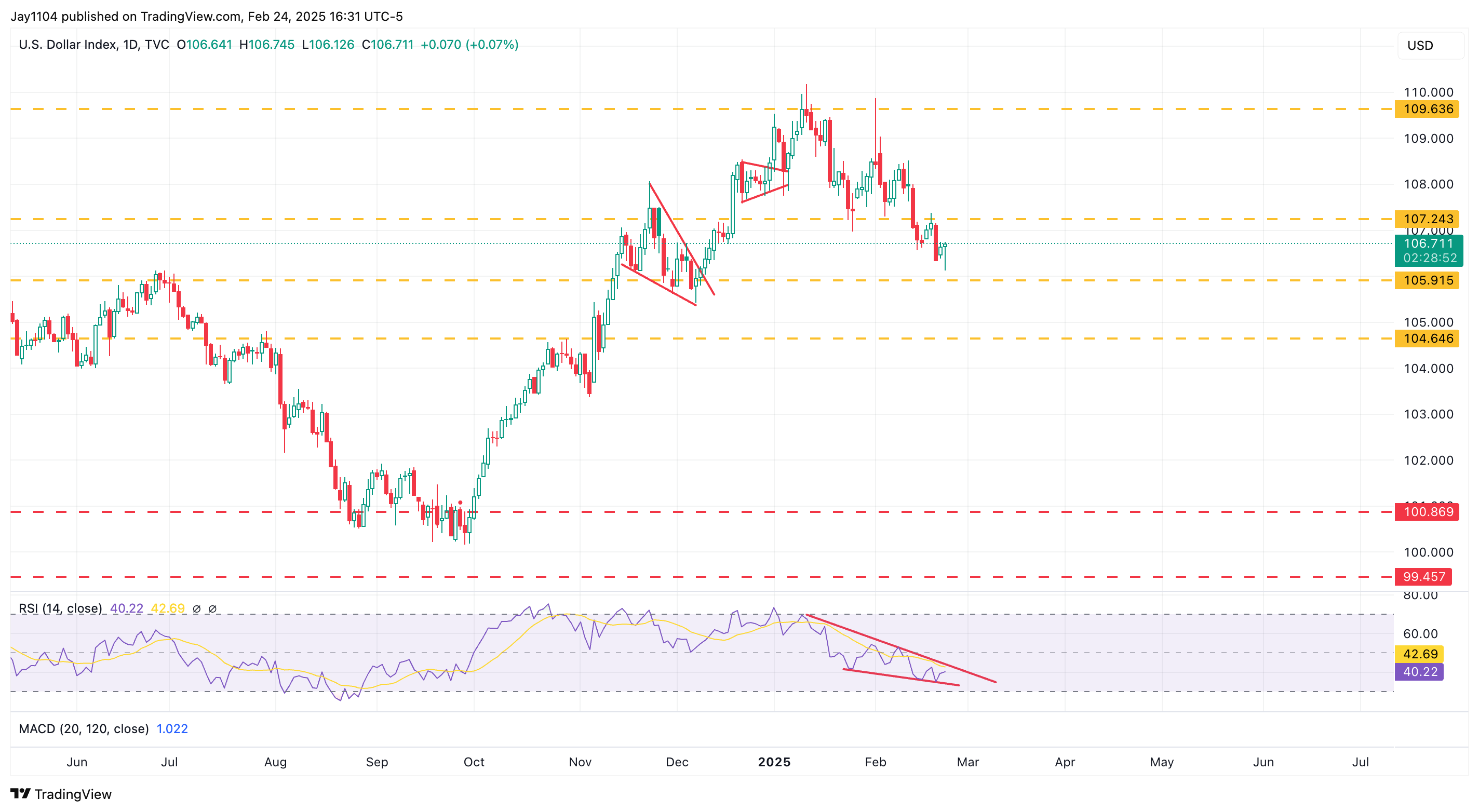
In the meantime, oil continues to hold above the $70 barrier, making another attempt at that level today. Once again, it held and managed to close at $70.85. For now, the RSI continues to make higher lows, leading me to believe that oil’s trend has shifted upward.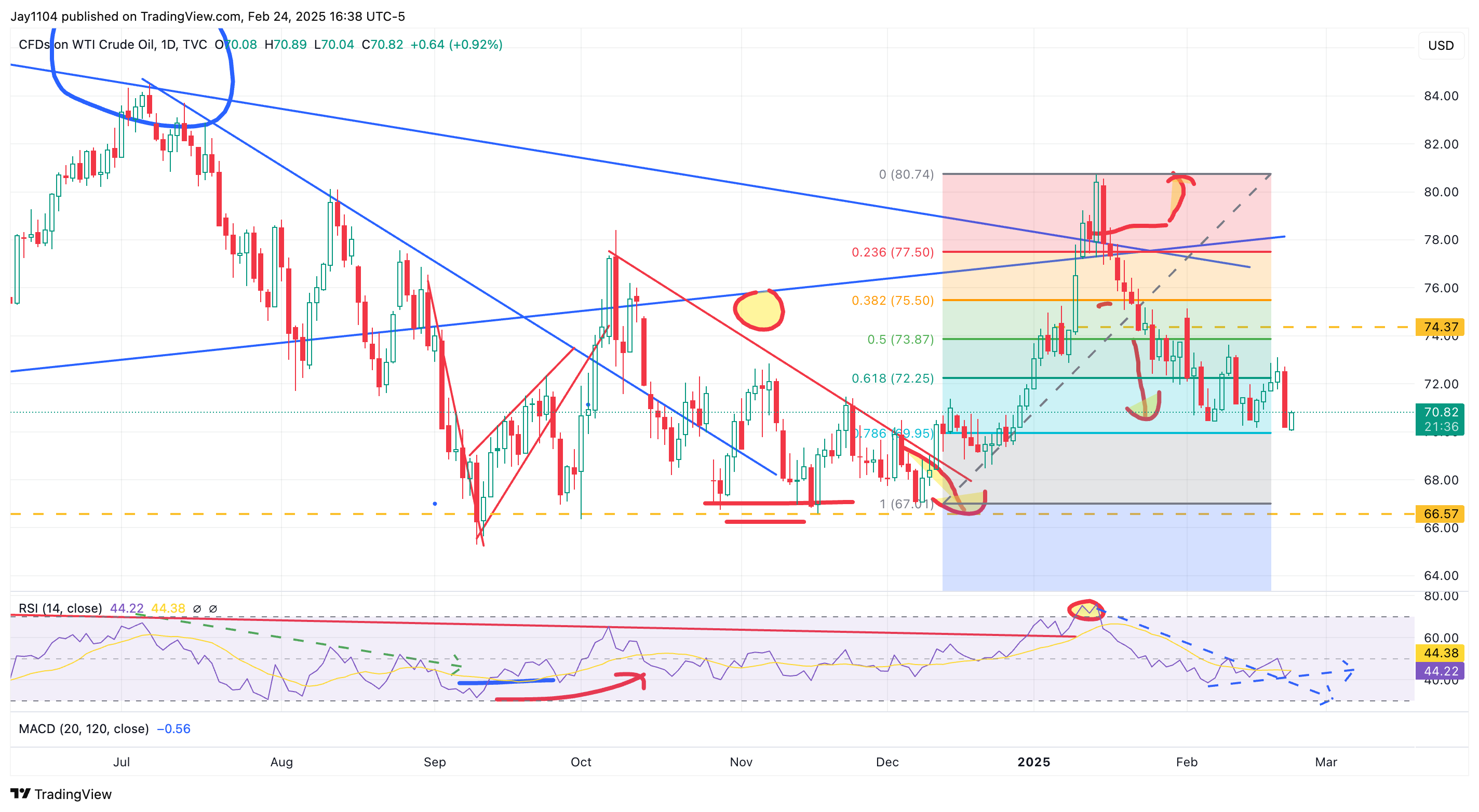
Finally, it looks like lumber is breaking out of a large base that formed throughout much of 2023 and 2024. It could still have room to run, which would clearly not be positive for homebuilders.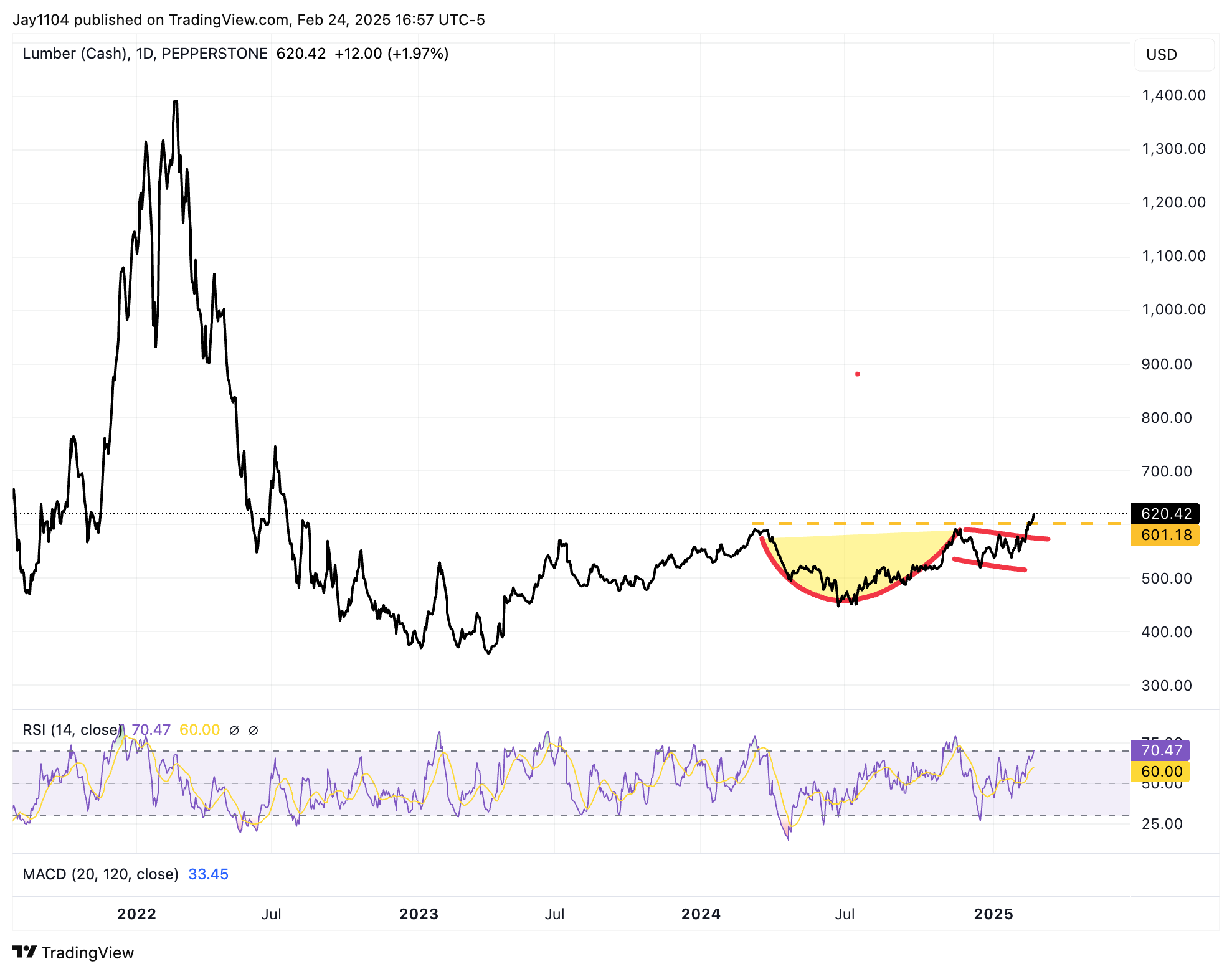
TERMS BY CHATGPT
•VIX 1-day – A short-term version of the VIX (Volatility Index) that measures expected market volatility over a single trading day rather than the standard 30-day period.
•bps (basis points) – A unit of measure used in finance, where 1 basis point = 0.01%. A move of 50 bps means a 0.50% change.
•DXY (U.S. Dollar Index) – An index measuring the value of the U.S. dollar relative to a basket of six major currencies.
•Falling wedge in RSI – A technical analysis pattern where the Relative Strength Index (RSI) forms a downward-sloping wedge, often signaling a potential reversal.
•Gap fill – The tendency of asset prices to revisit price gaps on a chart, where no trading occurred between two price levels.
